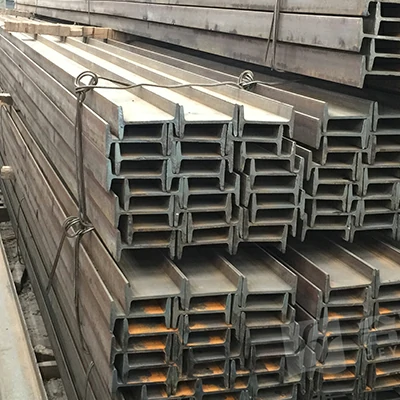I-beams, also known as H-beams or universal beams, contribute to the design of staircases and railings in several ways:
- Structural Support: I-beams provide structural support for staircases, serving as the primary load-bearing element that carries the weight of the staircase treads, landings, and handrails. They are often used as stringers or beams that support the steps and landings of the staircase, ensuring stability and strength.
- Long Spans: I-beams have a high strength-to-weight ratio, allowing them to span long distances without the need for additional support columns or intermediate beams. This feature makes them ideal for use in open-concept staircases with wide spans between floors or levels, providing a spacious and visually appealing design.
- Versatile Design: I-beams can be used in various staircase designs, including straight, curved, spiral, and cantilevered staircases. Their versatility allows for creative and innovative staircase configurations that can be customized to fit specific architectural styles and space requirements.
- Aesthetic Appeal: I-beams can be incorporated into the aesthetic design of staircases and railings to create a modern, industrial, or minimalist look. i beam manufacturers Exposed I-beams add visual interest and architectural detail to the staircase, enhancing the overall design aesthetic and contributing to the character of the space.
- Integration with Railings: I-beams can serve as structural supports for railings and balustrades, providing a secure attachment point for handrails, guardrails, and infill panels. They can be welded, bolted, or attached with brackets to create a sturdy and safe railing system that complies with building codes and safety standards.
- Custom Fabrication: I-beams can be custom-fabricated to meet specific design requirements and architectural preferences for staircases and railings. They can be cut, welded, drilled, and finished to achieve the desired size, shape, and appearance, allowing for seamless integration into the overall design scheme.
- Durability and Stability: I-beams are made from high-strength steel or other durable materials, providing long-lasting stability and reliability in staircase and railing applications. Their robust construction ensures that staircases and railings can withstand heavy loads, foot traffic, and environmental conditions without compromising safety or performance.
Overall, I-beams play a crucial role in the design of staircases and railings by providing structural support, versatility, aesthetic appeal, and durability. Their use allows for the creation of functional and visually striking staircase designs that enhance the architectural character and functionality of interior and exterior spaces.
What are the advantages of using i beam in construction projects?
Using I-beams in construction projects offers several advantages:
- High Strength-to-Weight Ratio: I-beams are designed to efficiently distribute loads along their length, providing exceptional strength while minimizing material usage. This high strength-to-weight ratio allows for lighter structural elements without sacrificing structural integrity, resulting in cost savings and easier handling during construction.
- Long Span Capabilities: I-beams are capable of spanning long distances between support points, making them ideal for creating open and spacious interior spaces without the need for intermediate columns or supports. This feature allows for flexible and versatile architectural designs in commercial, industrial, and residential buildings.
- Versatility: I-beams can be used in a wide range of construction applications, including building frames, bridges, mezzanines, platforms, and support structures. Their versatile design allows for creative and innovative solutions to meet diverse project requirements and architectural preferences.
- Ease of Fabrication and Installation: I-beams are available in standard sizes and configurations, making them easy to fabricate, transport, and install on-site. They can be cut, welded, bolted, or assembled with minimal labor and equipment, reducing construction time and costs.
- Compatibility with Other Materials: I-beams can be easily integrated with other construction materials, such as concrete, wood, glass, and masonry, to create hybrid structural systems that optimize performance and functionality. i beam supplier This compatibility allows for the design of custom solutions tailored to specific project needs.
- Structural Stability and Durability: I-beams provide excellent structural stability and durability, capable of withstanding heavy loads, dynamic forces, and environmental conditions over time. Their robust construction ensures long-term reliability and safety in a variety of applications, including high-rise buildings, industrial facilities, and infrastructure projects.
- Architectural Flexibility: I-beams offer architectural flexibility, allowing designers to create unique and innovative building forms, shapes, and spaces. Their clean and minimalist appearance can be incorporated into modern, contemporary, or industrial design styles, enhancing the aesthetic appeal of the built environment.
- Cost-Effectiveness: I-beams offer cost-effective solutions for structural framing and support systems in construction projects. Their efficient use of materials, long-span capabilities, and ease of installation help reduce overall project costs while delivering superior performance and functionality.
Overall, the advantages of using I-beams in construction projects include their high strength-to-weight ratio, long-span capabilities, versatility, ease of fabrication and installation, compatibility with other materials, structural stability and durability, architectural flexibility, and cost-effectiveness. These benefits make I-beams a preferred choice for structural engineers, architects, and builders seeking efficient and reliable solutions for a wide range of building and infrastructure applications.


Leave a Reply